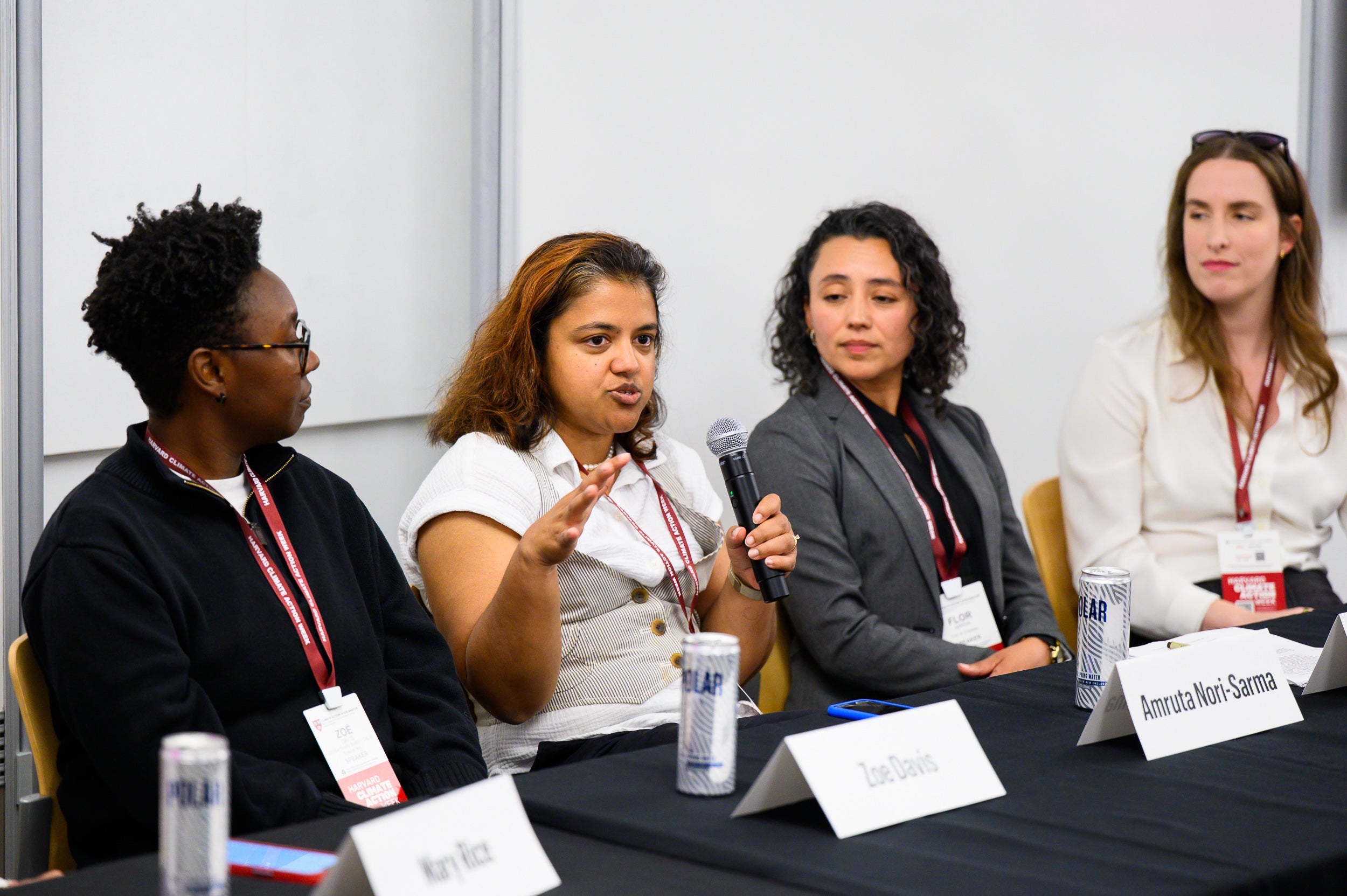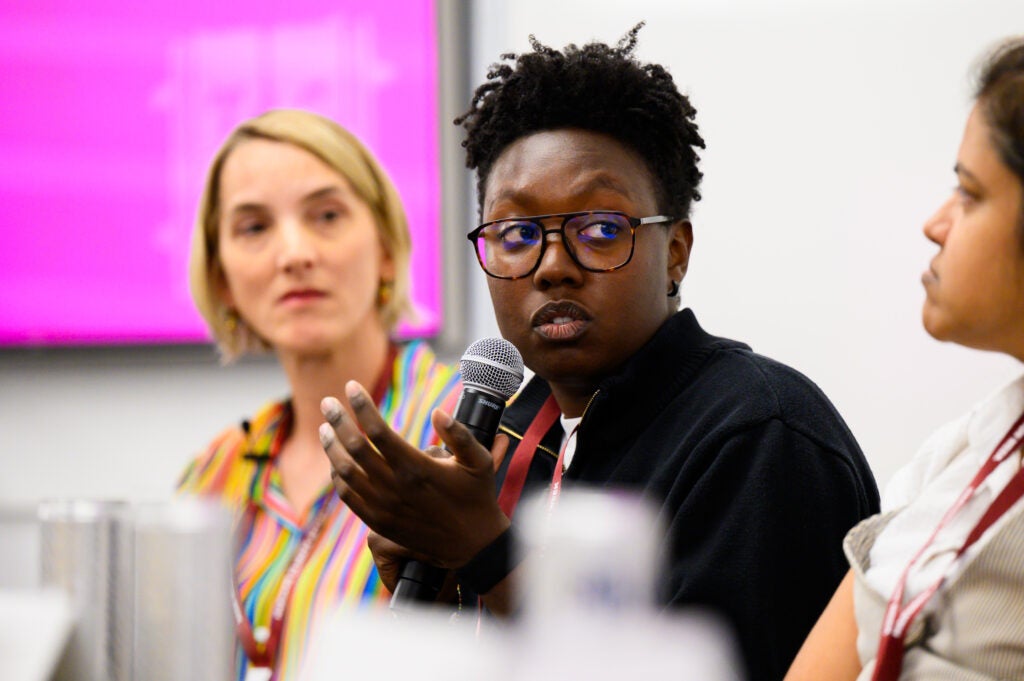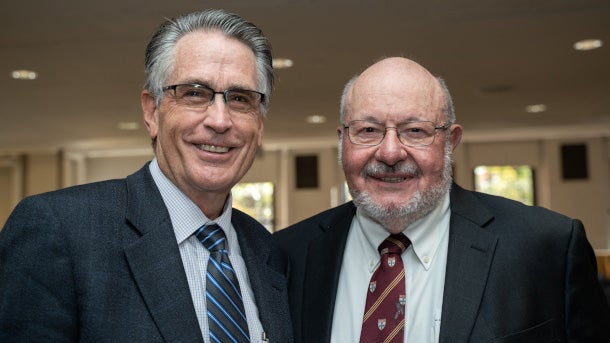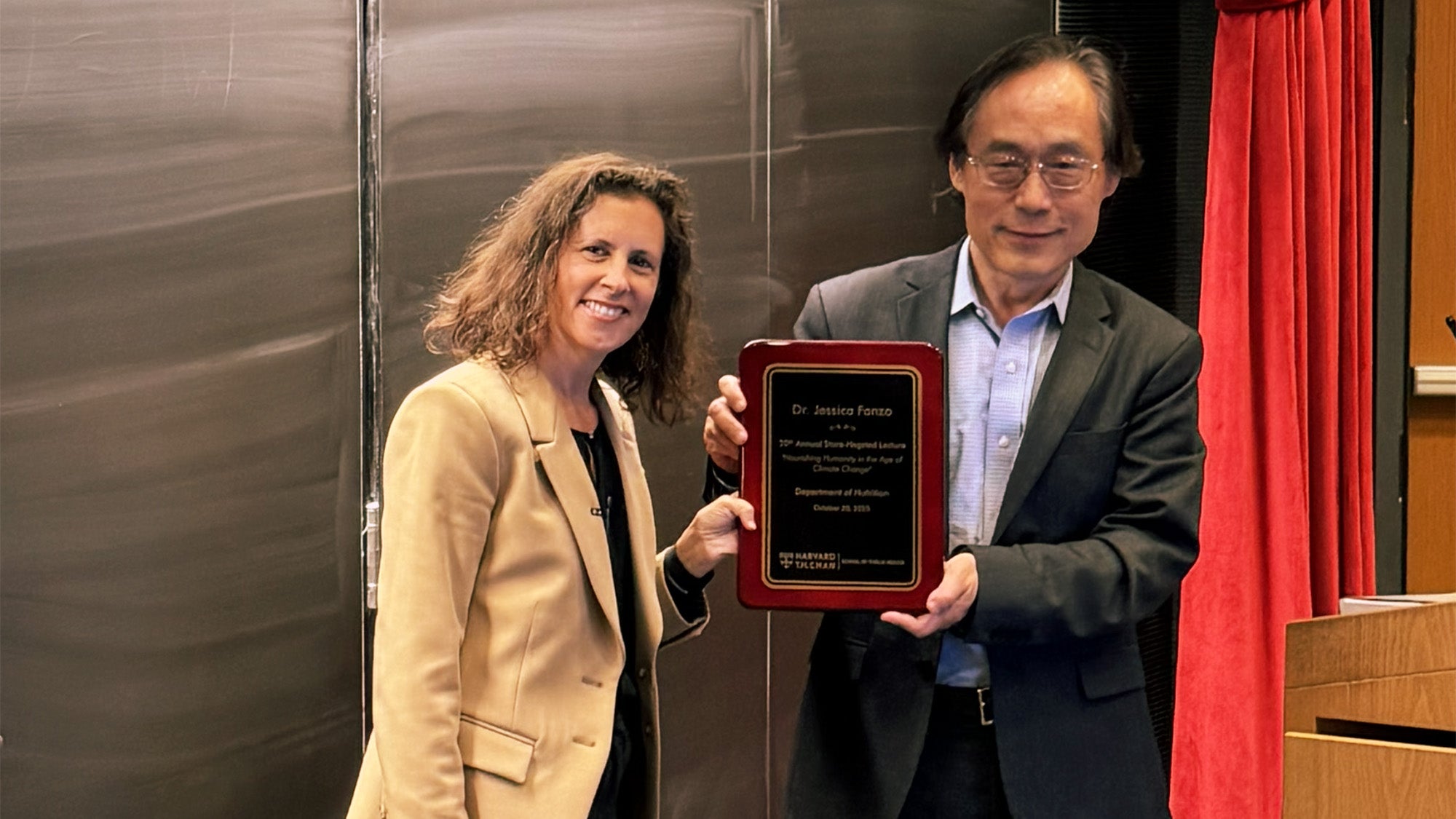Experts share climate risks, solutions during Harvard Climate Action Week

As part of Harvard Climate Action Week (HCAW), held from Sept. 15-21, environmental health researchers from Harvard T.H. Chan School of Public Health looked at how artificial intelligence (AI) could impact climate and discussed ways to protect the public from extreme heat.
AI’s climate and health impacts
At a Sept. 17 HCAW webinar, experts discussed AI’s possible impacts on climate and health—both good and bad.
Pulmonologist Nicholas Nassikas, an assistant professor of medicine at Beth Israel Deaconess Medical Center and a core faculty member in Harvard T.H. Chan School of Public Health’s Center for Climate, Health, and the Global Environment (Harvard Chan C-CHANGE), said one of the biggest benefits from AI is in the medical arena. For example, there’s an AI scribe tool that can listen to physician-patient conversations and generate notes and summaries, so that the physician never has to touch their computer during a patient visit—a benefit that could help reduce physician burnout. Another tool called OpenEvidence, developed by experts at Harvard, MIT, and several other institutions, helps pool information about diagnoses and treatments from the medical literature, making it much easier for providers to access the information. AI is also greatly improving medical imaging, helping detect cancers at an earlier stage, he noted.
The webinar was hosted by C-CHANGE and was moderated by its director Mary Rice, Mark and Catherine Winkler Associate Professor of Environmental Respiratory Health. The event featured several Harvard Chan School faculty members, including Claudio Battiloro, postdoctoral research fellow in the Department of Biostatistics; Francesca Dominici, Clarence James Gamble Professor of Biostatistics, Population, and Data Science; and Amruta Nori-Sarma, assistant professor of environmental and population science.
Nori-Sarma—whose research focuses on understanding the adverse health impacts of different environmental exposures, such as extreme weather events—sees a lot of potential to use AI to help mitigate some of those impacts. With its ability to look at massive datasets from across disciplines and across different data types, AI could help reveal, for example, environmental injustices that exist in particular communities, and simulate possible interventions and solutions. “Those are some of the areas that I’m most excited about,” she said.
But, she added, using AI for data analysis could also perpetuate some of the biases inherent in the data that it draws from—such as certain groups being over-represented in the data while others are under-represented. “For me, a lot of the concern is how do we think about intentionally using AI to facilitate discovery and improve public health while … making sure that we’re not perpetuating historical inequities in the system,” she said.
Panelists agreed that one of their biggest worries is the massive amount of electricity required to power AI data centers. “Most of that electricity comes from fossil fuels,” said Dominici. The burning of these fuels, she noted, leads to more carbon dioxide in the atmosphere, more warming of the planet, and more fine particulate air pollution air pollution, which can lead to serious health problems and early deaths.
Nassikas noted that it’s too soon to tell whether AI will provide a net benefit for health when it comes to climate change. AI’s dependence on the burning of fossil fuels is a clear detriment, he said, but it also has the potential to mitigate climate impacts through advances such as smarter traffic algorithms, improvements in industrial efficiency and energy systems, better preparedness for extreme weather, and better crop yields.
Both Dominici and Battiloro said they’re concerned about how the AI industry is currently run. “I think when things become too big and are in the hands of only a small group of people, that’s never good, and this is what’s happening with AI,” said Bottiloro. Dominici concurred, noting that “five players, all men, are running the shop,” and their thinking seems to be to “go as fast as possible, go as big as possible, and eliminate any type of regulation and incentive to be sustainable.” She thinks what’s needed is a cultural shift in which AI progress proceeds more slowly and carefully, allowing time for the industry to transition to renewable sources of energy.
Nori-Sarma added that it’s important to push for transparency and accountability from the AI industry, including public disclosure about AI data centers’ water usage, cooling needs, land use, and emissions.
Protecting the public from extreme heat
At a second panel hosted by C-CHANGE on Sept. 19, also moderated by Rice, municipal public health and climate officials joined Nori-Sarma and Caleb Dresser, assistant professor in the Department of Environmental Health, to discuss strategies to protect communities from extreme heat.

In addition to the well-established groups extreme heat threatens—young children, pregnant people, seniors, and people living with chronic health conditions— Flor Amaya, director of public health for Chelsea, Massachusetts, said that she and her colleagues are focused on protecting outdoor workers and other essential workers, such as those who work in restaurants. Zoe Davis, climate resilience project manager for Boston, highlighted the need to protect isolated seniors, especially those who live alone in neighborhoods such as Roxbury and Dorchester, where older homes aren’t equipped with infrastructure, such as air conditioning, to combat high temperatures. Anne Coglianese, chief resilience officer for Jacksonville, Florida, added that it’s important not to neglect teens. In a survey of middle- and high-schoolers conducted by the city of Jacksonville, the majority of teens named heat as the biggest disruptor to their day.
Solutions are on the way, said the panelists. In Boston, officials are working on widening access to cooling centers and, in the longer term, expanding the city’s green workforce, Davis said. In Chelsea—where there is just 2% tree canopy cover—officials are investing in planting trees, as well as introducing cool roofs and running an air conditioner lottery program for residents, said Amaya. Jacksonville is working to build citywide systems to respond to extreme heat events akin to how they respond to hurricanes, noted Coglianese. She added that officials are also researching temperature thresholds for when city infrastructure, from bridges to electrical grids, may fail.
The panelists agreed that much more needs to be done at an accelerated rate to get ahead of the growing threat extreme heat poses to health and safety. One strategy they deemed effective: partnerships between municipalities and academia.
“I work with one community health nurse and one community health worker—we don’t have the capacity to run sophisticated studies or analyze large data sets in order to help identify problems and conceive and implement long-term solutions,” said Amaya, who has collaborated with Nori-Sarma on heat mitigation strategies in Chelsea. “Partnering with academia is therefore crucial. We couldn’t do our work otherwise.”
Nori-Sarma added that perspective from local leaders like Amaya helps shape academic research to be more applicable. “I was conducting a study on cooling centers in greater Boston, and a meeting with Flor totally changed my understanding of the issue. I learned that people don’t want separate cooling centers as much as they want places they’re already using to be cooler,” she said. “Academics like me can pull data and build models, but it’s city leaders who provide the on-the-ground perspectives that allow research to inform real-life solutions that can improve public health.”
Dresser echoed this idea, mentioning successful heat mitigation programs co-developed by C-CHANGE and humanitarian and climate nonprofits. “It’s important for a range of voices to be heard, and to have at the table a variety of people who can set strategic direction and provide technical skills,” he said. “Handling extreme heat is a team activity.”
Putting plants first on the menu
Throughout the week Harvard campus cafes featured plant-forward meals on their menus, and the HCAW website featured cafe recipes, food-related health and sustainability tips, and ideas for how to get involved in the food system. The effort—called Healthy Plates for People and Planet—was co-sponsored by the Zhu Center for Global Cancer Prevention and The Nutrition Source team at Harvard Chan School, and the Harvard Office of Sustainability in collaboration with Harvard University Dining Services, Restaurant Associates, and Rebecca’s Culinary Group.


